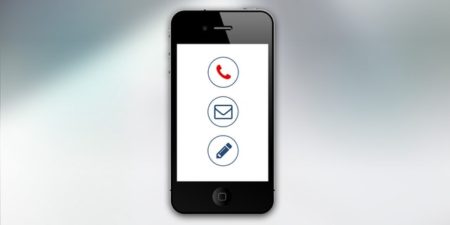
My first job after college was a sales position for the Washington Wizards, the professional basketball team in Washington, D.C. One of my first sales prospects was a local businessperson who expressed interest in purchasing season tickets for his company.
After a brief phone conversation with him on a Monday, I followed up with him the next day by leaving a voicemail. He didn’t respond to my message that day, so I left him the same voicemail on Wednesday… and the same one on Thursday… and the same one on Friday.
This is an example how not to follow-up with someone. He never returned any of my messages, and we never spoke again after our first call.
Salespeople are not the only ones whose success depends on their ability to communicate gracefully. No matter what kind of work you do, everyone faces situations that require following-up with other people- at work and outside of work. While each situation needs to be handled on a case-by-case basis, this article will highlight three of the most effective approaches on how to follow-up successfully and without being annoying.
Note: If this is your first time at StrongerHabits.com, you can click here to take a free assessment that measures your habits in four areas that have a major impact on how you feel and perform each day. The assessment takes less than 3 minutes, and you get your results immediately.
- Agree on how and when the follow-up will occur.
Not doing this was my first mistake with the prospect mentioned at the start of this article. Since I did not schedule a follow-up conversation, there was no agreed-upon timeline on if/when/how we would speak again.
As much as possible, try to schedule the timing and method for your next steps. This sets clear expectations for all parties involved and holds everyone accountable for speaking again on a specific date or for completing certain actions by a specific date. Many follow-up challenges can be avoided by setting clearer expectations up-front.
If another person is hesitant or not willing to schedule the follow-up, that is usually a sign that he is not interested in continuing the discussion. It’s better to learn that right away, instead of wasting time and energy trying to stay in touch in the future.
- Try humor.
Scheduling your next steps will eliminate many follow-up challenges. However, there will still be times when you need to follow-up with people who don’t follow through. There will also be situations when you need to follow-up on someone who didn’t respond to your initial outreach. When you find yourself in either situation, humor can be an effective way to break the ice and advance the discussion.
For example, I once tried to get in touch with another sales prospect. He did not respond to my first few attempts, so I emailed him and said that I hoped he was not holding it against me that I had attended a rival college. I also included a smiley face in my email, so that he would know that I was kidding. He responded to this message in less than an hour.
Humor can help you begin a dialogue, or it can help you re-open a dialogue with someone who has gone silent. A playful approach requires some creativity and skill, and it is not always appropriate, so use your best judgment.
- Make it clear that you are not trying to be annoying.
Sometimes, humor will not work or it will not be appropriate. If someone has not responded to you after multiple efforts, another approach is to be direct and say or write, “While I don’t want to be a pain, ____________.”
Fill in the blank with the most powerful reason that you can think of for why it is important for the two of you to connect. Make it clear what’s in it for the other person to speak with you. Or, tell this individual how the two of you connecting will benefit another person or a cause that is important. If someone has not responded to you at all (or in a timely fashion), he might not understand the urgency or benefits of connecting with you.
A direct approach has worked for me on many occasions and often results in the other person apologizing for being unresponsive. It’s unlikely that someone will think you are annoying when you actually state that you are not trying to be a pain. You can only use this approach with someone once (usually as a last-ditch effort), so use this tactic judiciously.
Summary
Your success in life depends not only on your personal habits, but also on your follow-up habits and your ability to stay in touch with other people. Everyone faces situations (at work and outside of work) that require following-up. As much as possible, schedule your next steps in advance. When you still have trouble getting in touch with someone, try incorporating humor or being direct. These approaches will dramatically reduce your chances of being seen as a pest, and they are much more likely to help you move the discussion forward.
P.S. If you enjoyed this article, check out my free 40-page eBook and newsletter below.

Free eBook and Newsletter
Download my free 40-page eBook on “The 5 Keys for Forming Stronger Habits.”
You’ll also receive my free weekly newsletter on how to become your strongest self.
Your email is safe. Unsubscribe anytime.
About the author: Pete Leibman is the Creator of StrongerHabits.com. He is a best-selling author, keynote speaker, executive recruiter, athlete, and peak performance coach. His work has been featured on Fox News, CBS Radio, and CNNMoney.com, and over 500,000 people across the world have read his articles.

